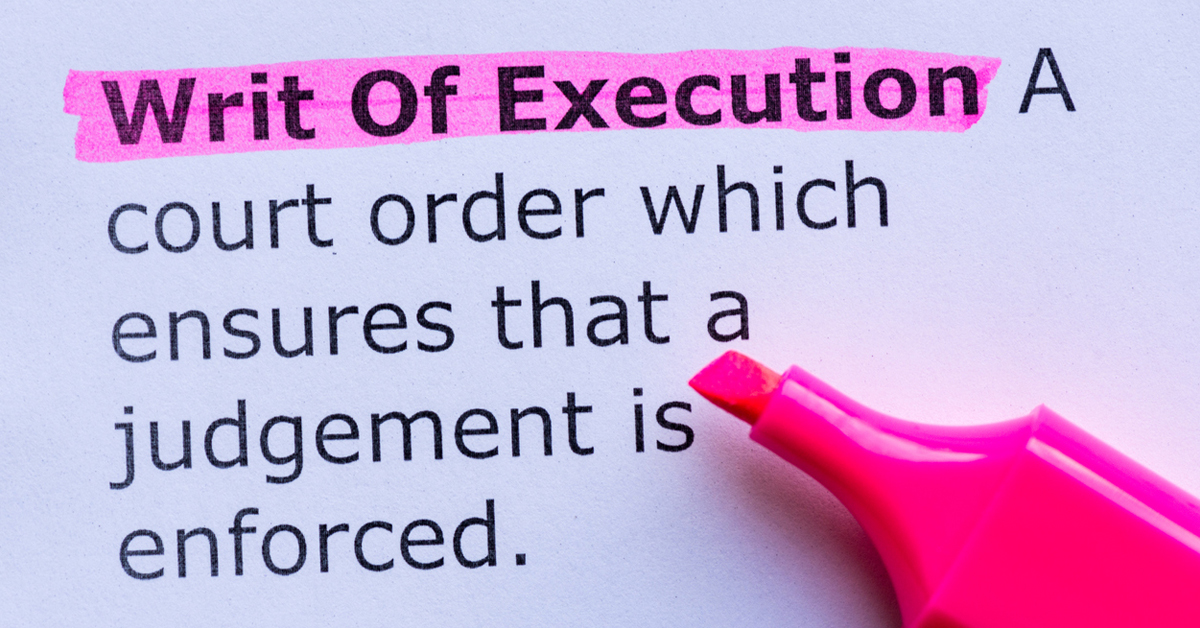
When a homeowner files bankruptcy or a consumer proposal, their unsecured debts are eliminated by their discharge from bankruptcy or upon the full completion of their proposal. This matter can be complicated when an unsecured creditor has registered a writ with the Sheriff’s office.
Table of Contents
What is a writ
A writ is an official court document, signed by a judge or other authority, ordering the defendant to perform a specific action (usually to pay a certain amount of money). If you are in arrears with an unsecured creditor, that creditor may sue you to seek a Writ of Execution or Writ of Seizure, to assist them in recovering the money you owe them.
When a writ is registered with the Sheriff’s office, it means the creditor must be paid before the proceeds from the sale of a property, or its refinancing are disbursed to the homeowner.
A writ cannot be removed upon the sale or refinancing of your home unless the debt is paid or otherwise dealt with.
How does a bankruptcy or consumer proposal affect a writ?
A bankruptcy or consumer proposal can remove a writ from your property once you have your discharge papers or your certificate of completion in a proposal.
Up until a few years ago, lawyers acting for the creditor would remove writs after proposals or bankruptcies if requested to do so. Increasingly, however, we have seen lawyers requesting fees to complete this process, and the cost can be more than $700 depending on the city. The impact can be stressful for homeowners looking to sell their home if they have a tight closing date.
If you are trying to sell or refinance your home during a bankruptcy or consumer proposal, you should speak to your trustee well in advance of the closing date so they may assist with any writs that may still be in place. The writs are not enforceable due to your bankruptcy or consumer proposal, but they may complicate the transaction.
How can you remove a writ for free?
It is possible to request that the sheriff’s office remove a writ for free.
The process involves completing a written request to withdraw the writ and sending this to your local sheriff’s office. In Ontario, this is form 600, which you can download from Ontariocourtforms.ca here.
A word of warning – removing a writ through the sheriff’s office can take 30 days or longer to complete. We recommend initiating this process shortly after your bankruptcy discharge to ensure the writs are removed long before you plan to sell or refinance your home. If not, please be sure to allow enough time to have the writs removed long before your closing date to avoid unnecessary legal costs and stress.
How does a lien on real estate work?
A lien is different from a writ. Where a writ can be removed by a bankruptcy or consumer proposal, a lien cannot. Examples of a lien against property include a car loan, mechanics lien for unpaid services, or CRA tax lien.
Where a writ is an order for payment, a lien becomes a registered debt secured against your property and has the same effect as a mortgage. A lien must be paid upon the sale of a home to be removed.
If you suspect you may have a lien registered against your property, talk to your trustee about the best course of action to ensure this lien does not interfere with your ability to sell your home upon discharge.





